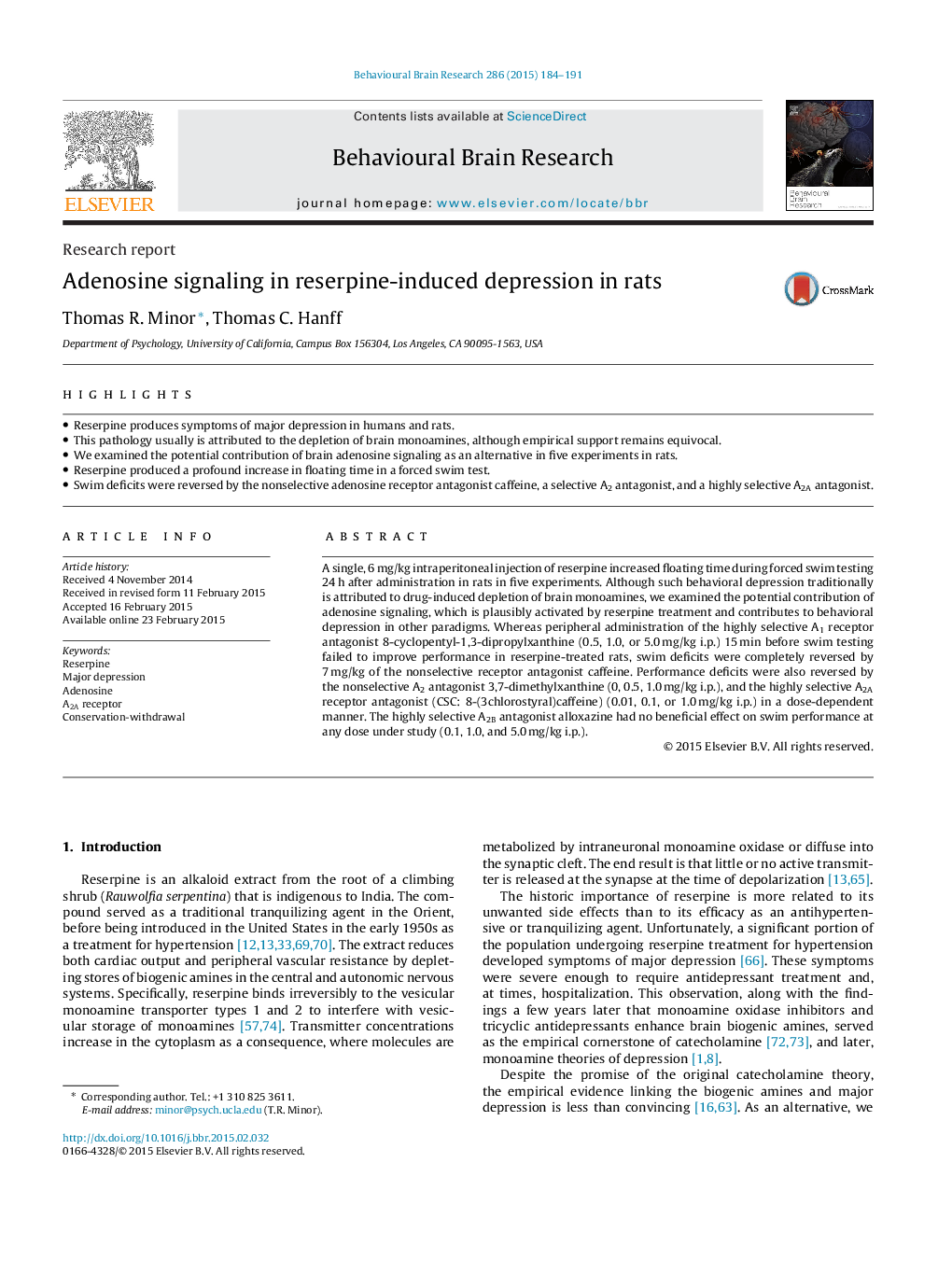| کد مقاله | کد نشریه | سال انتشار | مقاله انگلیسی | نسخه تمام متن |
|---|---|---|---|---|
| 6257121 | 1612946 | 2015 | 8 صفحه PDF | دانلود رایگان |
- Reserpine produces symptoms of major depression in humans and rats.
- This pathology usually is attributed to the depletion of brain monoamines, although empirical support remains equivocal.
- We examined the potential contribution of brain adenosine signaling as an alternative in five experiments in rats.
- Reserpine produced a profound increase in floating time in a forced swim test.
- Swim deficits were reversed by the nonselective adenosine receptor antagonist caffeine, a selective A2 antagonist, and a highly selective A2A antagonist.
A single, 6Â mg/kg intraperitoneal injection of reserpine increased floating time during forced swim testing 24Â h after administration in rats in five experiments. Although such behavioral depression traditionally is attributed to drug-induced depletion of brain monoamines, we examined the potential contribution of adenosine signaling, which is plausibly activated by reserpine treatment and contributes to behavioral depression in other paradigms. Whereas peripheral administration of the highly selective A1 receptor antagonist 8-cyclopentyl-1,3-dipropylxanthine (0.5, 1.0, or 5.0Â mg/kg i.p.) 15Â min before swim testing failed to improve performance in reserpine-treated rats, swim deficits were completely reversed by 7Â mg/kg of the nonselective receptor antagonist caffeine. Performance deficits were also reversed by the nonselective A2 antagonist 3,7-dimethylxanthine (0, 0.5, 1.0Â mg/kg i.p.), and the highly selective A2A receptor antagonist (CSC: 8-(3chlorostyral)caffeine) (0.01, 0.1, or 1.0Â mg/kg i.p.) in a dose-dependent manner. The highly selective A2B antagonist alloxazine had no beneficial effect on swim performance at any dose under study (0.1, 1.0, and 5.0Â mg/kg i.p.).
Journal: Behavioural Brain Research - Volume 286, 1 June 2015, Pages 184-191
